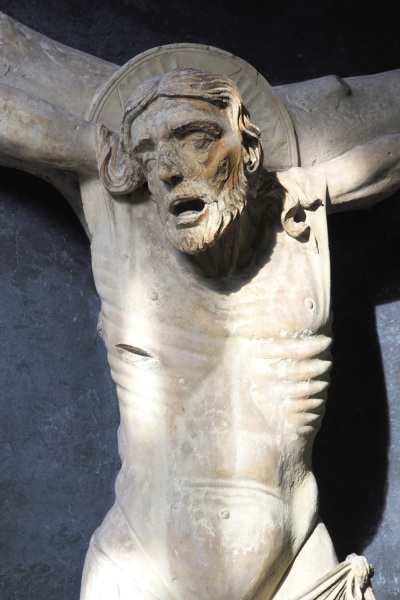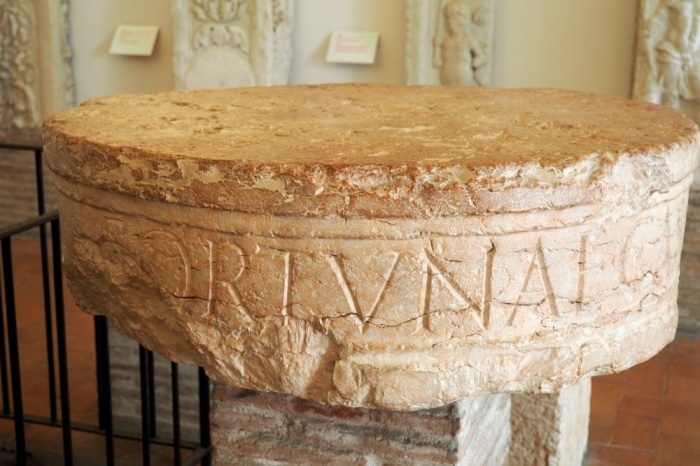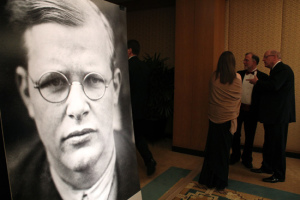Europe’s Christian heritage and the passion of Paris

On my recent trip to Verona, Italy to attend the World Congress of Families, I also took time to explore some historic sites and museums in this ancient city. For example, I visited the Arena di Verona, a massive structure only slightly smaller (but also older) than the Colosseum in Rome. There is also an amphitheater carved into a hillside, the Teatro Romano, with an archaeological museum adjacent to it.
An arena or a theater for public spectacle and performances was just what I expected as a vestige of the Roman Empire. I was not quite as prepared for what I saw in the archaeological museum. Almost every artifact on display was an altar to one of the pagan gods of ancient Rome. They included pieces paying homage to: Saturn, Hercules, Diana, Jupiter, Mercury, “winged Eros,” “the naked god Bacchus,” and the “goddess Fortuna” (pictured).

Of course, I knew intellectually that the ancients Romans were polytheists (worshippers of many gods). But it was still somehow startling to realize how seriously the Romans took their paganism, with shrines like these having an honored place in their homes.
I think even non-Christians might have shared my reaction. That illustrates how deeply our own culture has been shaped by Christianity—even for those who do not actively practice it. In the Western world today, I suspect most people who believe in the divine at all generally believe in only one God, bearing at least some resemblance to what is portrayed in the Jewish and Christian Scriptures. To be confronted with the evidence of sincere, active, committed polytheism was startling.
And to me, as a committed Christian, it was even disturbing. After visiting that museum, I had to spend some time in prayer—and I wondered whether Italy values its Christian heritage as much as it does the Roman.
I had my question answered (and my faith somewhat restored) the next day when I visited the Castelvecchio Museum. Located in a medieval castle, this museum featured an extensive collection of Christian art, much with biblical themes, that was absent from the archaeological museum. For example, a stone crucifix, carved by an unnamed 14th-century master artist, depicts Christ’s agony on the cross in a graphic way. The bulging ribs, the open mouth, the gaping wound in his side where pierced by a spear—all these dramatically communicate the “passion” (as in suffering) of the Christ. (See picture above.) I found it deeply moving.
Historically, in one sense, Christianity clearly triumphed over the paganism of Rome. It survived persecution, and with the conversion of Constantine, even gained worldly power. The Roman Empire eventually fell, but Christianity not only survived but grew to be practiced around the globe.
Yet in another sense, the battle for the soul of Western civilization, and especially of Europe, continues. European politicians and bureaucrats have steadfastly refused to make even the most nominal reference to Europe’s Christian heritage in the organizing documents of the European Union. Yet there was far less hesitation about using a Greek myth—that of Europa, a woman abducted and raped by the god Zeus disguised as a white bull—as a symbol for modern Europe. A museum sponsored by the European Parliament apparently makes no reference to religion at all—no Roman Catholic Church, no Protestant Reformation, nothing. Critic Arnold Huijgen writes that in the museum, “The French Revolution seems to be the birthplace of Europe; there is little room for anything that may have preceded it.”
This leads me to the shocking news of this week’s disastrous fire at the Cathedral of Notre Dame in Paris. It is hard for an American to wrap our minds around the fact that this magnificent house of worship has stood for nearly half of the two millennia that Christianity has existed. Yet during the French Revolution, Notre Dame was seized from the Roman Catholic Church and turned into a “Temple of Reason.”
Although France moved beyond the worst excesses of the Revolution, the ideology of the Enlightenment to a large extent supplanted active Christian faith as a guiding force, not only in France, but in Europe as a whole. The result has been a modern Europe that is far more secular than the United States.
Thus, it was almost a surprise to see how deeply Parisians seemed to be grieving as they watched the cathedral burn, and how quickly French politicians and philanthropists alike pledged that it would be rebuilt. Let us pray—in this Holy Week, as we remember the crucifixion and resurrection of Jesus—that the people of Europe will not only cherish this impressive physical symbol of Christianity, but will experience a rebirth of the reality of the faith it symbolizes in their hearts.




























